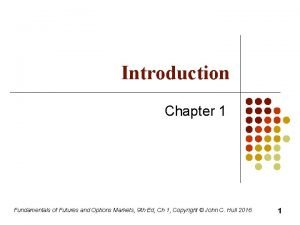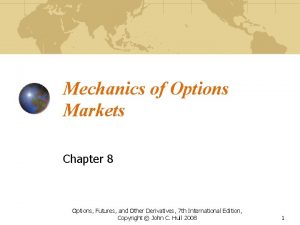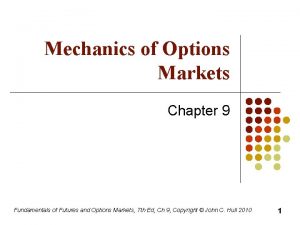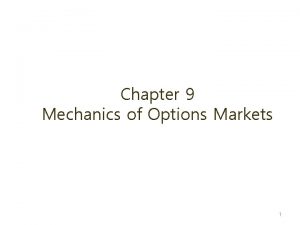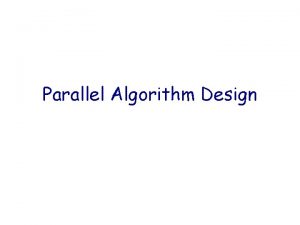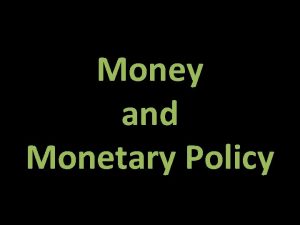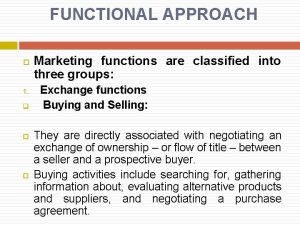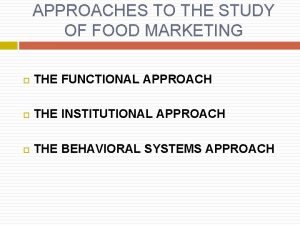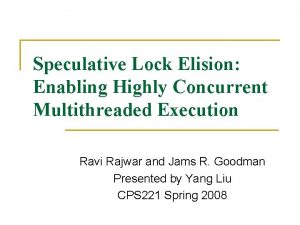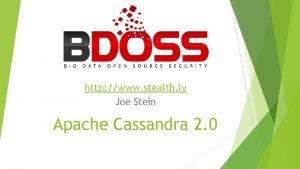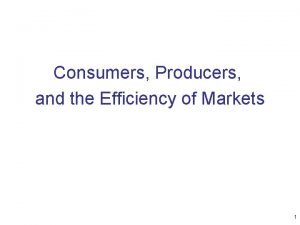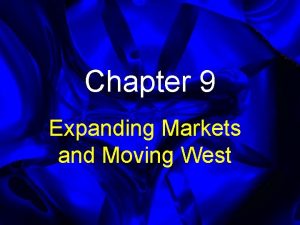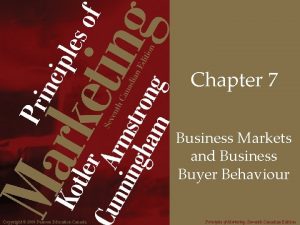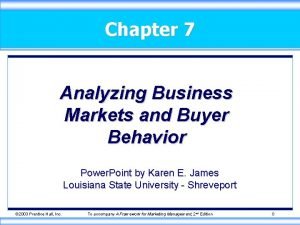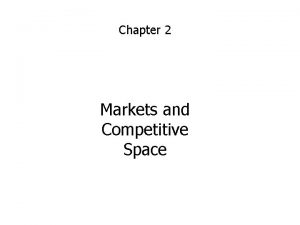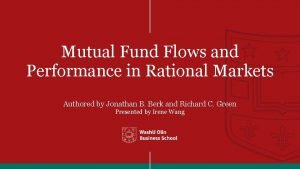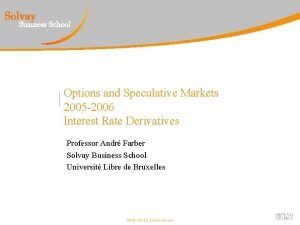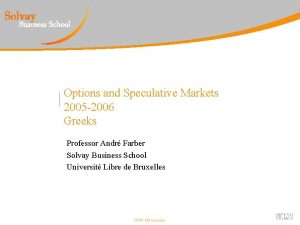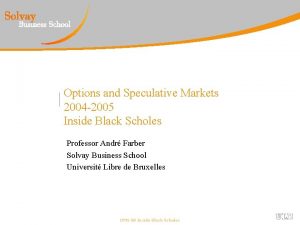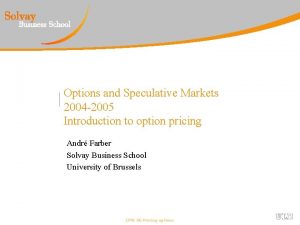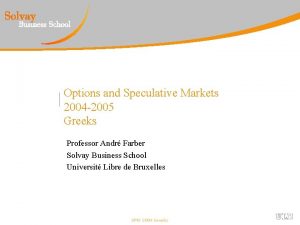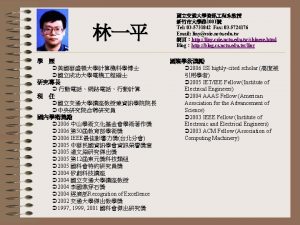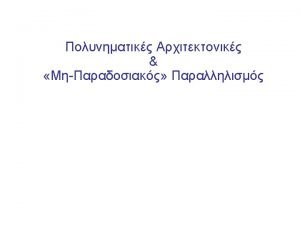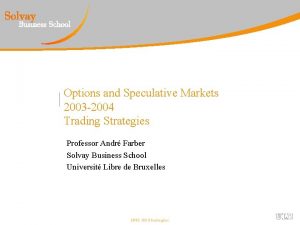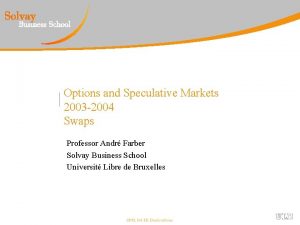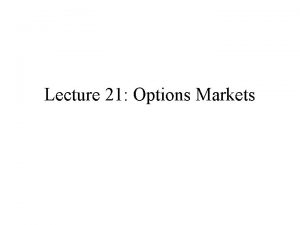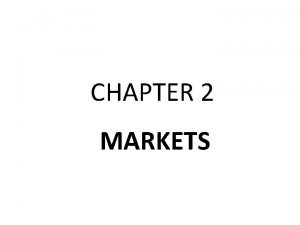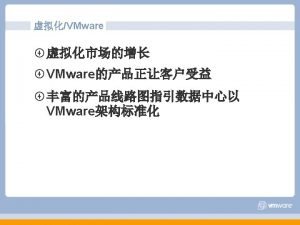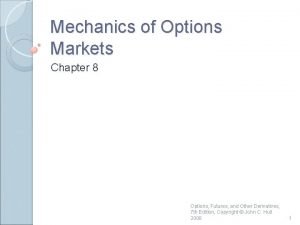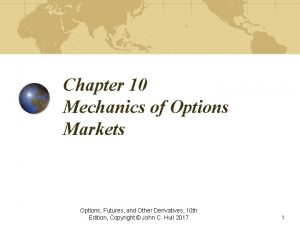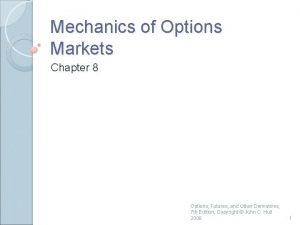Options and Speculative Markets 2005 2006 Options on































- Slides: 31

Options and Speculative Markets 2005 -2006 Options on Bonds and Interest Rates Professor André Farber Solvay Business School Université Libre de Bruxelles OMS 10 Options on bonds and IR

• • • Caps Floors Swaption Options on IR futures Options on Government bond futures 12/29/2021 OMS 10 Options on bonds and IR 2

Introduction • A difficult but important topic: • Black-Scholes collapses: 1. Volatility of underlying asset constant 2. Interest rate constant • For bonds: – 1. Volatility decreases with time – 2. Uncertainty due to changes in interest rates – 3. Source of uncertainty: term structure of interest rates • 3 approaches: 1. Stick of Black-Scholes 2. Model term structure : interest rate models 3. Start from current term structure: arbitrage-free models 12/29/2021 OMS 10 Options on bonds and IR 3

Review: forward on zero-coupons +M T 0 T* -M(1+Rτ) • Borrowing forward • Long FRA: 12/29/2021 ↔ Selling forward a zero-coupon [M (r-R) ]/(1+r ) OMS 10 Options on bonds and IR 4

Options on zero-coupons • Consider a 6 -month call option on a 9 -month zero-coupon with face value 100 • Current spot price of zero-coupon = 95. 60 • Exercise price of call option = 98 • Payoff at maturity: Max(0, ST – 98) • The spot price of zero-coupon at the maturity of the option depend on the 3 -month interest rate prevailing at that date. • ST = 100 / (1 + r. T 0. 25) • Exercise option if: • ST > 98 • r. T < 8. 16% 12/29/2021 OMS 10 Options on bonds and IR 5

Payoff of a call option on a zero-coupon • The exercise rate of the call option is R = 8. 16% • With a little bit of algebra, the payoff of the option can be written as: • Interpretation: the payoff of an interest rate put option • The owner of an IR put option: • Receives the difference (if positive) between a fixed rate and a variable rate • Calculated on a notional amount • For an fixed length of time • At the beginning of the IR period 12/29/2021 OMS 10 Options on bonds and IR 6

European options on interest rates • Options on zero-coupons • Face value: M(1+R ) • Exercise price K • Option on interest rate A call option • Payoff: Max(0, ST – K) A put option • Payoff: Max[0, M (R-r. T) / (1+r. T )] A put option • Payoff: Max(0, K – ST ) A call option • Payoff: Max[0, M (r. T -R) / (1+r. T )] 12/29/2021 • Exercise rate R OMS 10 Options on bonds and IR 7

Cap • A cap is a collection of call options on interest rates (caplets). • The cash flow for each caplet at time t is: Max[0, M (rt – R) ] • M is the principal amount of the cap • R is the cap rate • rt is the reference variable interest rate • is the tenor of the cap (the time period between payments) • Used for hedging purpose by companies borrowing at variable rate • If rate rt < R : CF from borrowing = – M rt • If rate r. T > R: CF from borrowing = – M r. T + M (rt – R) = – M R 12/29/2021 OMS 10 Options on bonds and IR 8

Floor • A floor is a collection of put options on interest rates (floorlets). • The cash flow for each floorlet at time t is: Max[0, M (R –rt) ] • M is the principal amount of the cap • R is the cap rate • rt is the reference variable interest rate • is the tenor of the cap (the time period between payments) • Used for hedging purpose buy companies borrowing at variable rate • If rate rt < R : CF from borrowing = – M rt • If rate r. T > R: CF from borrowing = – M r. T + M (rt – R) = – M R 12/29/2021 OMS 10 Options on bonds and IR 9

Black’s Model The B&S formula for a European call on a stock providing a continuous dividend yield can be written as: But S e-q. T er. T is the forward price F This is Black’s Model for pricing options 12/29/2021 OMS 10 Options on bonds and IR 10

Example (Hull 5 th ed. 22. 3) • • 1 -year cap on 3 month LIBOR Cap rate = 8% (quarterly compounding) Principal amount = $10, 000 Maturity 1 1. 25 Spot rate 6. 39% 6. 50% Discount factors 0. 9381 0. 9220 Yield volatility = 20% • Payoff at maturity (in 1 year) = • Max{0, [10, 000 (r – 8%) 0. 25]/(1+r 0. 25)} 12/29/2021 OMS 10 Options on bonds and IR 11

Example (cont. ) • Step 1 : Calculate 3 -month forward in 1 year : • F = [(0. 9381/0. 9220)-1] 4 = 7% (with simple compounding) • Step 2 : Use Black Value of cap = 10, 000 0. 9220 [7% 0. 2851 – 8% 0. 2213] 0. 25 = 5. 19 cash flow takes place in 1. 25 year 12/29/2021 OMS 10 Options on bonds and IR 12

For a floor : • • • N(-d 1) = N(0. 5677) = 0. 7149 N(-d 2) = N(0. 7677) = 0. 7787 Value of floor = 10, 000 0. 9220 [ -7% 0. 7149 + 8% 0. 7787] 0. 25 = 28. 24 Put-call parity : FRA + floor = Cap -23. 05 + 28. 24 = 5. 19 Reminder : Short position on a 1 -year forward contract Underlying asset : 1. 25 y zero-coupon, face value = 10, 200 Delivery price : 10, 000 FRA = - 10, 000 (1+8% 0. 25) 0. 9220 + 10, 000 0. 9381 = -23. 05 - Spot price 1. 25 y zero-coupon + PV(Delivery price) 12/29/2021 OMS 10 Options on bonds and IR 13

1 -year cap on 3 -month LIBOR 12/29/2021 OMS 10 Options on bonds and IR 14

Using bond prices • • In previous development, bond yield is lognormal. Volatility is a yield volatility. y = Standard deviation ( y/y) We now want to value an IR option as an option on a zero-coupon: • For a cap: a put option on a zero-coupon • For a floor: a call option on a zero-coupon • We will use Black’s model. • Underlying assumption: bond forward price is lognormal • To use the model, we need to have: • The bond forward price • The volatility of the forward price 12/29/2021 OMS 10 Options on bonds and IR 15

From yield volatility to price volatility D is modified duration This leads to an approximation for the price volatility: • Remember the relationship between changes in bond’s price and yield: 12/29/2021 OMS 10 Options on bonds and IR 16

Back to previous example (Hull 4 th ed. 20. 2) 1 -year cap on 3 month LIBOR Cap rate = 8% Principal amount = 10, 000 Maturity 1 Spot rate 6. 39% Discount factors 0. 9381 Yield volatility = 20% 1 -year put on a 1. 25 year zero-coupon 1. 25 6. 50% 0. 9220 Face value = 10, 200 [10, 000 (1+8% * 0. 25)] Striking price = 10, 000 Spot price of zero-coupon = 10, 200 *. 9220 = 9, 404 Using Black’s model with: 1 -year forward price = 9, 404 / 0. 9381 = 10, 025 F = 10, 025 K = 10, 000 r = 6. 39% T=1 = 0. 35% 3 -month forward rate in 1 year = 6. 94% Price volatility = (20%) * (6. 94%) * (0. 25) = 0. 35% 12/29/2021 Call (floor) = 27. 631 Delta = 0. 761 Put (cap) = 4. 607 Delta = - 0. 239 OMS 10 Options on bonds and IR 17

Interest rate model • The source of risk for all bonds is the same: the evolution of interest rates. Why not start from a model of the stochastic evolution of the term structure? • Excellent idea • ……. difficult to implement • Need to model the evolution of the whole term structure! • But change in interest of various maturities are highly correlated. • This suggest that their evolution is driven by a small number of underlying factors. 12/29/2021 OMS 10 Options on bonds and IR 18

Using a binomial tree • Suppose that bond prices are driven by one interest rate: the short rate. • Consider a binomial evolution of the 1 -year rate with one step per year. r 0, 2 = 6% r 0, 1 = 5% r 0, 0 = 4% r 1, 2 = 4% r 1, 1 = 3% r 2, 2 = 2% Set risk neutral probability p = 0. 5 12/29/2021 OMS 10 Options on bonds and IR 19

Valuation formula • The value of any bond or derivative in this model is obtained by discounting the expected future value (in a risk neutral world). The discount rate is the current short rate. i is the number of “downs” of the interest rate j is the number of periods t is the time step 12/29/2021 OMS 10 Options on bonds and IR 20

Valuing a zero-coupon • We want to value a 2 -year zero-coupon with face value = 100. t=0 t=1 t=2 100 95. 12 92. 32 =(0. 5 * 100 + 0. 5 * 100)/e 5% 100 =(0. 5 * 95. 12 + 0. 5 * 97. 04)/e 4% 97. 04 Start from value at maturity =(0. 5 * 100 + 0. 5 * 100)/e 3% 100 Move back in tree 12/29/2021 OMS 10 Options on bonds and IR 21

Deriving the term structure • Repeating the same calculation for various maturity leads to the current and the future term structure: t=3 t=2 t=0 t=1 • 0 1. 0000 1 0. 9418 0 1 2 3 1. 0000 0. 9608 0. 9232 0. 8871 0 1. 0000 1 0. 9512 2 0. 9049 0 1. 0000 1 0. 9704 2 0. 9418 0 1. 0000 1 0. 9608 0 1. 0000 1 0. 9802 0 1. 0000 12/29/2021 OMS 10 Options on bonds and IR 22

1 -year cap • • • 1 -year IR call on 12 -month rate Cap rate = 4% (annual comp. ) t=0 t=1 1 -year put on 2 -year zero-coupon Face value = 104 Striking price = 100 t=0 (r = 5%) IR call = 1. 07% Put = 1. 07 ZC = 104 * 0. 9512 = 98. 93 (5. 13% - 4%)*0. 9512 (r = 4%) IR call = 0. 52% Put = 0. 52 12/29/2021 1 (r = 4%) (r = 3%) IR call = 0. 00% Put = 0. 00 OMS 10 Options on bonds and IR 23

2 -year cap • • • Valued as a portfolio of 2 call options on the 1 -year rate interest rate (or 2 put options on zero-coupon) Caplet Maturity Value 1 1 0. 52% (see previous slide) 2 2 0. 51% (see note for details) Total 1. 03% 12/29/2021 OMS 10 Options on bonds and IR 24

Swaption • A 1 -year swaption on a 2 -year swap • Option maturity: 1 year • Swap maturity: 2 year • Swap rate: 4% • Remember: Swap = Floating rate note - Fix rate note • Swaption = put option on a coupon bond • Bond maturity: 3 year • Coupon: 4% • Option maturity: 1 year • Striking price = 100 12/29/2021 OMS 10 Options on bonds and IR 25

Valuing the swaption t=0 t=1 t=2 Coupon = 4 t=3 Coupon = 4 Bond = 100 r =6% Bond = 97. 94 r =5% Bond = 97. 91 Swaption = 2. 09 r =4% Bond = Swaption = 1. 00 Bond = 100 r =4% Bond = 99. 92 r =3% Bond = 101. 83 Swaption = 0. 00 Bond = 100 r =2% Bond = 101. 94 Bond = 100 12/29/2021 OMS 10 Options on bonds and IR 26

Vasicek (1977) • • Derives the first equilibrium term structure model. 1 state variable: short term spot rate r Changes of the whole term structure driven by one single interest rate Assumptions: 1. Perfect capital market 2. Price of riskless discount bond maturing in t years is a function of the spot rate r and time to maturity t: P(r, t) 3. Short rate r(t) follows diffusion process in continuous time: dr = a (b-r) dt + dz 12/29/2021 OMS 10 Options on bonds and IR 27

The stochastic process for the short rate • Vasicek uses an Ornstein-Uhlenbeck process dr = a (b – r) dt + dz • a: speed of adjustment • b: long term mean • : standard deviation of short rate • Change in rate dr is a normal random variable • The drift is a(b-r): the short rate tends to revert to its long term mean • r>b b – r < 0 interest rate r tends to decrease • r<b b – r > 0 interest rate r tends to increase • Variance of spot rate changes is constant • Example: Chan, Karolyi, Longstaff, Sanders The Journal of Finance, July 1992 • Estimates of a, b and based on following regression: rt+1 – rt = + rt + t+1 a = 0. 18, b = 8. 6%, = 2% 12/29/2021 OMS 10 Options on bonds and IR 28

Pricing a zero-coupon • Using Ito’s lemna, the price of a zero-coupon should satisfy a stochastic differential equation: d. P = m P dt + s P dz • This means that the future price of a zero-coupon is lognormal. • Using a no arbitrage argument “à la Black Scholes” (the expected return of a riskless portfolio is equal to the risk free rate), Vasicek obtain a closed form solution for the price of a t-year unit zero-coupon: • P(r, t) = e-y(r, t) * t • with y(r, t) = A(t)/t + [B(t)/t] r 0 • For formulas: see Hull 4 th ed. Chap 21. • Once a, b and are known, the entire term structure can be determined. 12/29/2021 OMS 10 Options on bonds and IR 29

Vasicek: example • Suppose r = 3% and dr = 0. 20 (6% - r) dt + 1% dz • Consider a 5 -year zero coupon with face value = 100 • Using Vasicek: • A(5) = 0. 1093, B(5) = 3. 1606 • y(5) = (0. 1093 + 3. 1606 * 0. 03)/5 = 4. 08% • P(5) = e- 0. 0408 * 5 = 81. 53 • The whole term structure can be derived: • • Maturity 1 2 3 4 5 6 7 12/29/2021 Yield 3. 28% 3. 52% 3. 73% 3. 92% 4. 08% 4. 23% 4. 35% Discount factor 0. 9677 0. 9320 0. 8940 0. 8549 0. 8153 0. 7760 0. 7373 OMS 10 Options on bonds and IR 30

Jamshidian (1989) • Based on Vasicek, Jamshidian derives closed form solution for European calls and puts on a zero-coupon. • The formulas are the Black’s formula except that the time adjusted volatility √T is replaced by a more complicate expression for the time adjusted volatility of the forward price at time T of a T*-year zero-coupon 12/29/2021 OMS 10 Options on bonds and IR 31
 Fundamentals of futures and options markets
Fundamentals of futures and options markets (2005-2006) school calendar
(2005-2006) school calendar Mechanics of options
Mechanics of options Mechanics of options markets
Mechanics of options markets Mechanics of options markets
Mechanics of options markets Activity sheet 3: stock market calculations answer key
Activity sheet 3: stock market calculations answer key Speculative asset meaning
Speculative asset meaning Thinking algebraically answer key
Thinking algebraically answer key It is a genre of speculative
It is a genre of speculative Speculative decomposition
Speculative decomposition Demand for money definition
Demand for money definition Functional approach
Functional approach Speculative decomposition
Speculative decomposition Facilitative middlemen
Facilitative middlemen Speculative thinking
Speculative thinking Speculative lock elision
Speculative lock elision Cassandra speculative execution policy
Cassandra speculative execution policy Speculative decomposition
Speculative decomposition Why study financial market
Why study financial market Financial markets and institutions jeff madura ppt
Financial markets and institutions jeff madura ppt Consumers, producers, and the efficiency of markets
Consumers, producers, and the efficiency of markets New markets tax credit 101
New markets tax credit 101 Characteristics of consumer behavior
Characteristics of consumer behavior Chapter 9 expanding markets and moving west
Chapter 9 expanding markets and moving west Business buyer behaviour
Business buyer behaviour Analyzing business markets
Analyzing business markets Market and competitive space
Market and competitive space Buyer behaviour
Buyer behaviour Financial markets and institutions - ppt
Financial markets and institutions - ppt Urban economics and real estate markets
Urban economics and real estate markets Sociology major dartmouth
Sociology major dartmouth Mutual fund flows and performance in rational markets
Mutual fund flows and performance in rational markets
